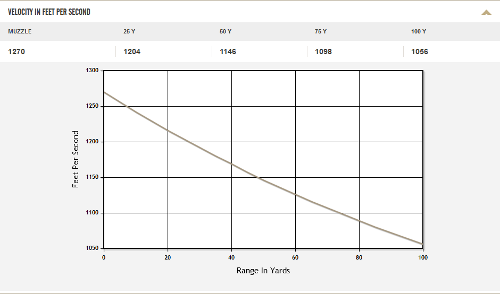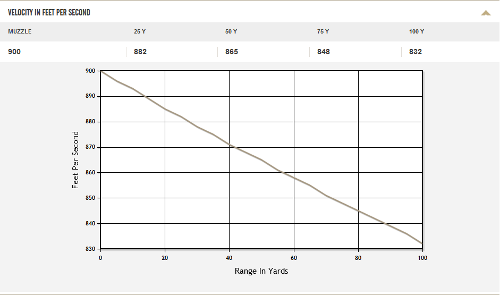The 460 Rowland represents the pinnacle of handgun calibers for self-defense. While it is always possible to ‘bring more gun’, it is impractical to carry that ‘more gun’ concealed. What the 460 Rowland is is a 45 ACP cartridge and gun combination that have been specially configured to work safely and reliably with roughly double the chamber pressure of the host cartridge. Because of the dramatically increased chamber pressure, it is folly to intermingle 45 ACP and 460 Rowland cartridges. As such, the Rowland cartridge case is approximately 1/16” longer than the 45 ACP to prevent unintentionally chambering the more powerful round in a standard ’45’.
To give an idea of the increase in performance possible with this round: a 45 ACP +P 230gr projectile will leave the muzzle at 950 ft/sec while a 460 Rowland will propel a 230gr projectile to 1340 ft/sec. This puts the terminal performance, out of a 1911-style handgun, on par with a 44 Magnum handgun. Below is an example of the 460 Rowland terminal performance potential:
Please keep in mind that the 460 Rowland round pictured at top is a mild 460 Rowland round. Greater performance is possible by simply adding more propellant.
One area where handguns are generally deficient is in the realm of aerodynamics and terminal effectiveness at range. The dynamic pressure present on a bullet nose while it impacts water or gelatin causes the bullet to expand. Bullets traveling much under 700 ft/sec are generally not capable of expanding. When a bullet leaves the muzzle and travels downrange with the aerodynamics of a brick, this is cause for significant concern. Let’s take a look at how the 460 Rowland can keep our bullets expanding even when hitting distant targets:
 44 Magnum 240gr Projectile (mid-range velocity)
44 Magnum 240gr Projectile (mid-range velocity) Courtesy : Federal Cartridge
Starting at 1270 ft/sec out of the muzzle, the cartridge is traveling at 1146 ft/sec at 50 yards and impacts the 100 yard target at 1056 ft/sec. This is faster than the muzzle velocity of the 45 ACP we will look at below.
 45 ACP 230gr Projectile
45 ACP 230gr Projectile Courtesy : Federal Cartridge
At 100 yards distance, the impact velocity of the 45 ACP 230gr JHP is 832 ft/sec. The good news is that the velocity drop over 100 yards is 68 ft/sec. By rough extrapolation this means that this bullet is effective for 300 yards.
This is from a 5” barrel length and is a high pressure cartridge. If you are shooting a standard load from a 4” barrel, the story will be slightly less positive.
When your life is in danger, there really isn’t any such thing as ‘enough.’ I used to chuckle every time I would see ‘that guy’ at the gym working his cardio like there was no tomorrow. Normally I make a scene when I run but this guy was doing the ‘heaving for air’ sound and was turning bright red. My opinion of him pushing himself to the limit every time changed when 3 guys tried to kick down my door one morning. Even though my cardio was ‘good’ it was nowhere near the level of the man at the gym. After a few seconds of calm, my breathing began to get really quick and my cognitive functions changed in what people commonly describe as the ‘adrenaline dump.’ There is no such thing as ‘prepared enough’ when things go to 120%.
That is what I like about the 460 Rowland. But before we blindly follow the Law of “More is Better”, let me restate my position on Accuracy, Power and Speed. You must be able to hit what you are aiming at quickly enough and hard enough to degrade their ability to fight. The better you complete those three tasks, the more degraded will be their ability to fight. I recommend people buy a 9mm Luger or 38 Special with 4” barrel as their first gun. For a lot of people, a gun is the same as a magic talisman that wards off evil spirits. On the one hand, it’s great that people are practicing their right to own and carry firearms. But on the other hand it is important to practice with that gun as much as possible because shooting guns is not a natural ability that people have.
The best thing to do is to get professional training or to have a friend who has military or law enforcement training to teach you how to shoot a handgun in a tactical situation. If anything they say seems ‘odd’ or full of bravado … walk away. To properly shoot a 460 Rowland, I recommend that you first progress to the point where you can shoot a 45 ACP or 357 Magnum revolver through a challenging course of fire like the FBI Special Agent qualification course. That particular course is weighted both for time elapsed and accuracy. You must be slow enough, fast enough to win in such a situation.
Ammunition selection for the Rowland is not difficult in terms of ammunition for protection from animals. Purchase a cartridge that uses a heavy, non-deforming bullet and that is pushed as hard as you are comfortable handling. Protection from people is more of a challenge. I still recommend that the JHP that you select is pushed as hard as you can handle in your gun. The problem that I am finding is that JHPs made for 45 ACP velocity have difficulty holding up to the dramatically increased velocity of the 460 Rowland. Only experimentation will bear out which JHPs are suitable for use in this caliber. Ideally, you want a bullet that penetrates to 12.0” in 10% ballistic gelatin after hitting at the highest velocity possible for your caliber and expanding without much weight lost to fragmentation.
A good amount of experimentation with the 460 Rowland in a Glock 21 has been performed by author Jim Downey and the velocity results for the 460 Rowland and many other calibers are publically available at Ballistics by the Inch.
Most people are apprehensive about ‘upgunning’ one of their firearms, when in fact it is done safely all of the time. Consider that the 9mm Luger SAAMI cartridge specification calls for an maximum average pressure of 35,000 PSI. The MAP of the 45 ACP is 21,000 PSI. People have been shooting 9mm Luger safely for many years … so what is the difference?
The difference is a term called bolt thrust. Where it matters to us in this instance is that the 460 Rowland cartridge will present a much higher rearward acceleration to the slide. Cartridge brass is meant to be malleable enough to seal the chamber of a firearm and prevent propellant leakage—it is the barrel that is the support member to bear the internal pressure load of the propellant burning. If the cartridge backs out of the barrel while it is still at a higher-than-designed-for pressure, the high pressure gas will leak into the magazine and the rest of the gun. This often results in damage to the gun and the shooter. Heavier recoil springs are used to facilitate safe operation of the 460 Rowland and judging by the slide velocity measurements that I have made with the Photron SA-5, the 460 Rowland LLC conversion kit for the Remington R1 1911 keeps the slide velocity down to the factory 45 ACP magnitude.